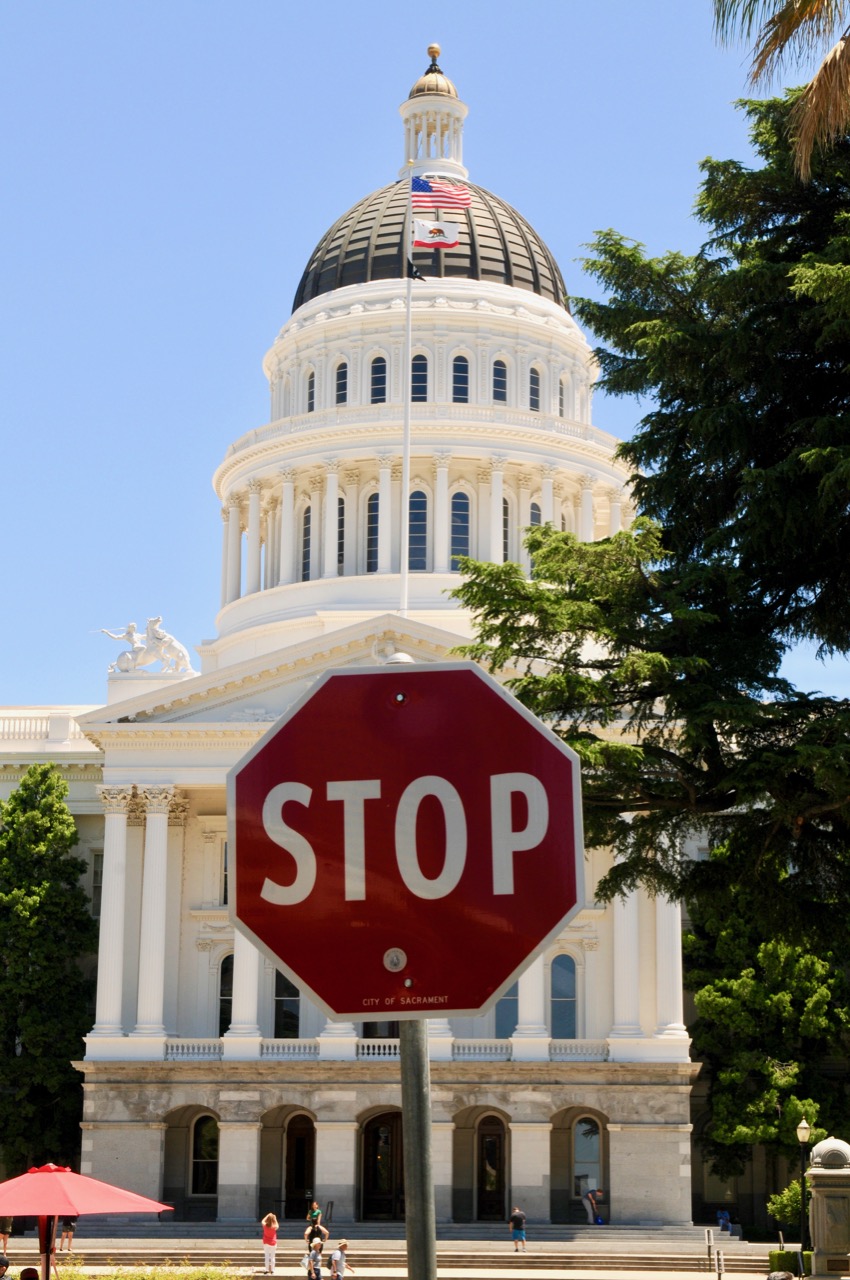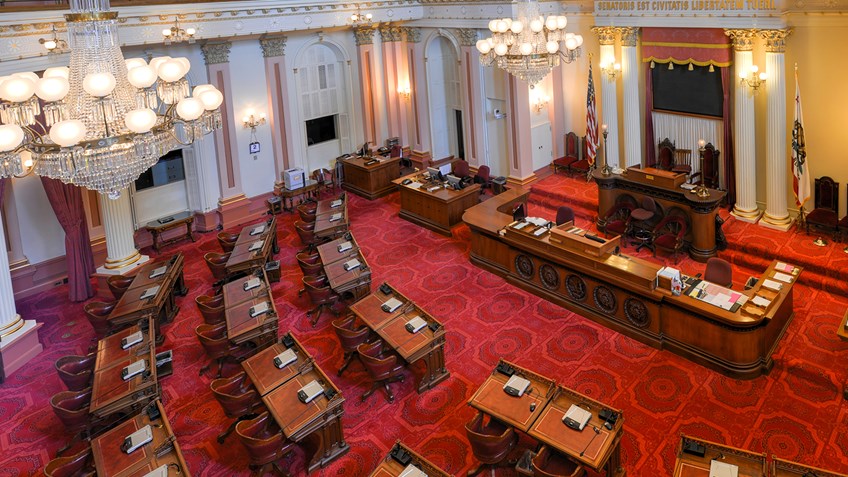
Salinas Valley ag land. (Photo: Katy Grimes for California Globe)
An Economic New Year’s Resolution for California
The state’s cost of living already exceeds the national average by 38%, with housing costs nearly double the national benchmark
By John Doolittle, January 2, 2025 12:49 pm
California was once the epitome of the American economic dream, a powerhouse that grew to become the world’s fifth-largest economy. But today, that dream is fading as businesses—from Fortune 500 companies to small enterprises—flee the state’s punitive tax regime as well as its complex and needlessly burdensome regulations. As we turn the page on a new year, California’s governmental leadership must confront this exodus and commit to meaningful reform.
The state’s hostile business environment has earned it the last-place ranking in Chief Executive magazine’s annual “Best and Worst States for Business” survey. This dubious distinction stems from two factors: the imposition of some of the highest corporate and personal income tax rates in the country, as well as a maze of over 395,000 regulations that far surpasses any other state’s regulatory framework.
The consequences of these policies are increasingly evident. Between 2018 and 2021, 352 companies relocated their headquarters to more business-friendly states, with the pace of departures doubling in 2021 compared to 2020. These figures aren’t just statistics—they represent lost jobs, diminished economic opportunities, and a shrinking tax base that undermines the state’s ability to provide essential services.
But perhaps most troubling is that this exodus now extends beyond traditional businesses to providers of essential municipal services. The recent closure of the Chiquita Canyon Landfill – which took in nearly a quarter of the waste generated in Los Angeles County – on January 1, 2025, illustrates this broader concern.
On New Year’s Eve, the company that operates the landfill announced the abrupt closure of operations at the landfill “due to the current regulatory environment.” The primary constraints, as they put it, had to do with the county reneging on a 2022 agreement to keep the landfill open and the imposition of administrative hurdles that made it impossible to continue operations.
Admittedly, there has been an ongoing rare Elevated Temperature Landfill (ETLF) event impacting the communities surrounding Chiquita Canyon with noxious odors that may have given regulators pause in moving forward with the necessary approvals. But the ETLF occurred even though the property was managed according to all state and federal guidelines. It is also happening in an inactive part of the landfill that is far from ongoing operations, and its operator has taken all necessary steps to mitigate the situation both within the landfill and for the surrounding communities.
These steps include working with federal, state, regional and local authorities to coordinate a comprehensive response, as well as providing nearly $15 million directly to local residents affected by the ETLF through a Community Relief Fund. Such acts of good faith show that the landfill operator is a responsible corporate partner and one with which the state should want to continue to work. But unfortunately, California regulators do not seem open to finding reasonable solutions that would maintain active waste disposal operations.
However, the trash produced by small businesses and local residents will not stop. In fact, this type of regulatory overreach will only increase waste disposal costs and create more environmental impacts than regulators claimed to be preventing, due to the increased distance trucks will have to drive to other landfills. This unfortunate result is indicative of the bureaucratic overreach and regulatory strangleholds that are driving businesses out of California and creating a livability crisis for ordinary Californians.
The state’s cost of living already exceeds the national average by 38%, with housing costs nearly double the national benchmark, and the loss of job-creators and the employment opportunities they provide will make it more difficult for the average Californian to afford everyday life. As other essential service providers either close or pass increased regulatory costs to companies and consumers, these economic pressures will only intensify, potentially accelerating the unprecedented population decline already underway in the state.
As we enter 2025, the Golden State must resolve to reverse this decline. The path forward requires decisive action to streamline regulations and to create a more competitive tax environment. Just as individuals commit to personal improvement through New Year’s resolutions, California’s leaders must commit to a regulatory diet—trimming unnecessary restrictions while maintaining essential protections. This balanced approach would ensure that good environmental stewardship and economic growth are maintained.
Short-sighted policies that prioritize excessive regulatory control over economic viability got California into this mess. But the new year presents an opportunity for meaningful reform and a chance to restore the promise of the California dream through policies that welcome rather than repel business investment, thus ensuring the wellbeing of California’s residents who cherish the unique values, which constitute the California dream. The future of the state—and the millions who call it home—depends on it.
- An Economic New Year’s Resolution for California - January 2, 2025
- California’s War on Business Harms Everyday Residents - October 30, 2024
- California’s Waste Mis-management Proposal - March 27, 2024





Here is the list of state agencies and commissions in random order that either need to be eliminated or trimmed way back so that they have minimal impact on business and everyday citizens. Public Utilities Commission, California Air Resources Board, State Water Resources Control Board, Department of Insurance, Department of Education, Coastal Commission, Department of Housing and Community Development, Department of Public Health, and last but not least everyone’s punching bag Cal Trans. The California state budget is probably 50% to big. Could you imagine the economic renaissance that all Californian’s would enjoy if 150 billion dollars were to be returned to California taxpayers and the needless regulations that choke California’s economic engine are eliminated? That possibility is here at our fingertips.
Excellent list, Hal!!!
Hopefully President Trump & his Cabinet read this and put big red bullseyes on all the departments you listed….
Regarding the Chiquita Canyon Landfill I have seen similar in the rural areas around Gilroy. The dairy, the chicken farmer have been on their ranch for many years before neighbors moved in close proximity didn’t like the smell, dust, or flies and wanted the farm shut down. I imagine similar happens with industrial plants and the like.